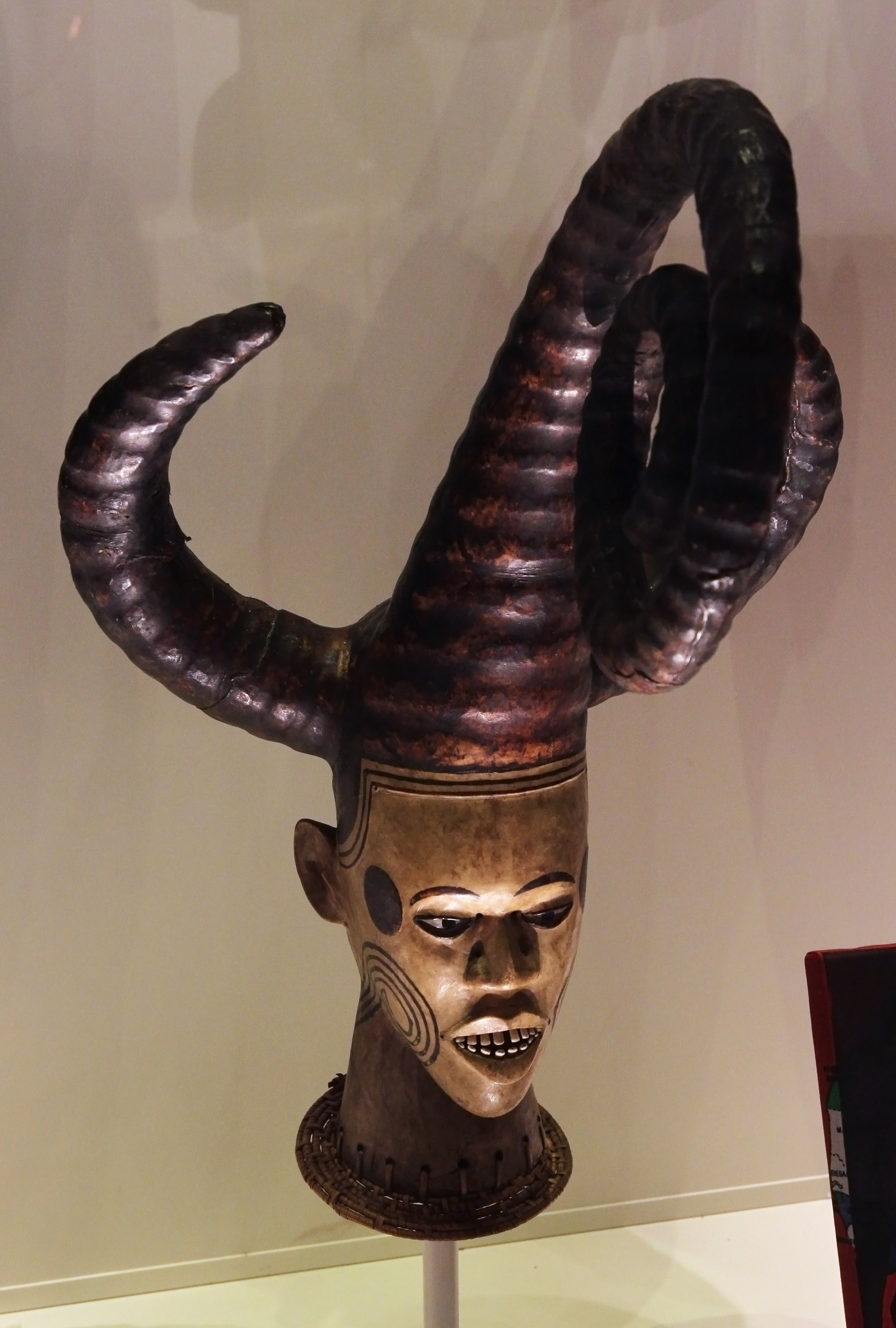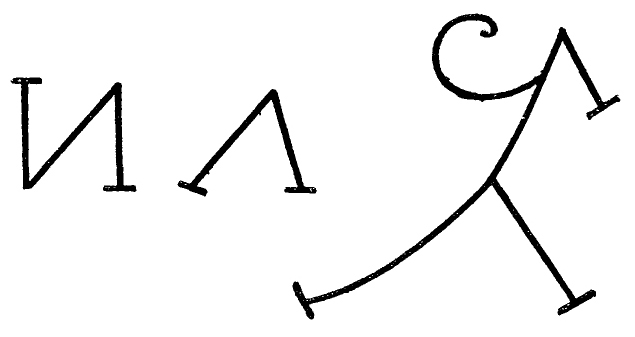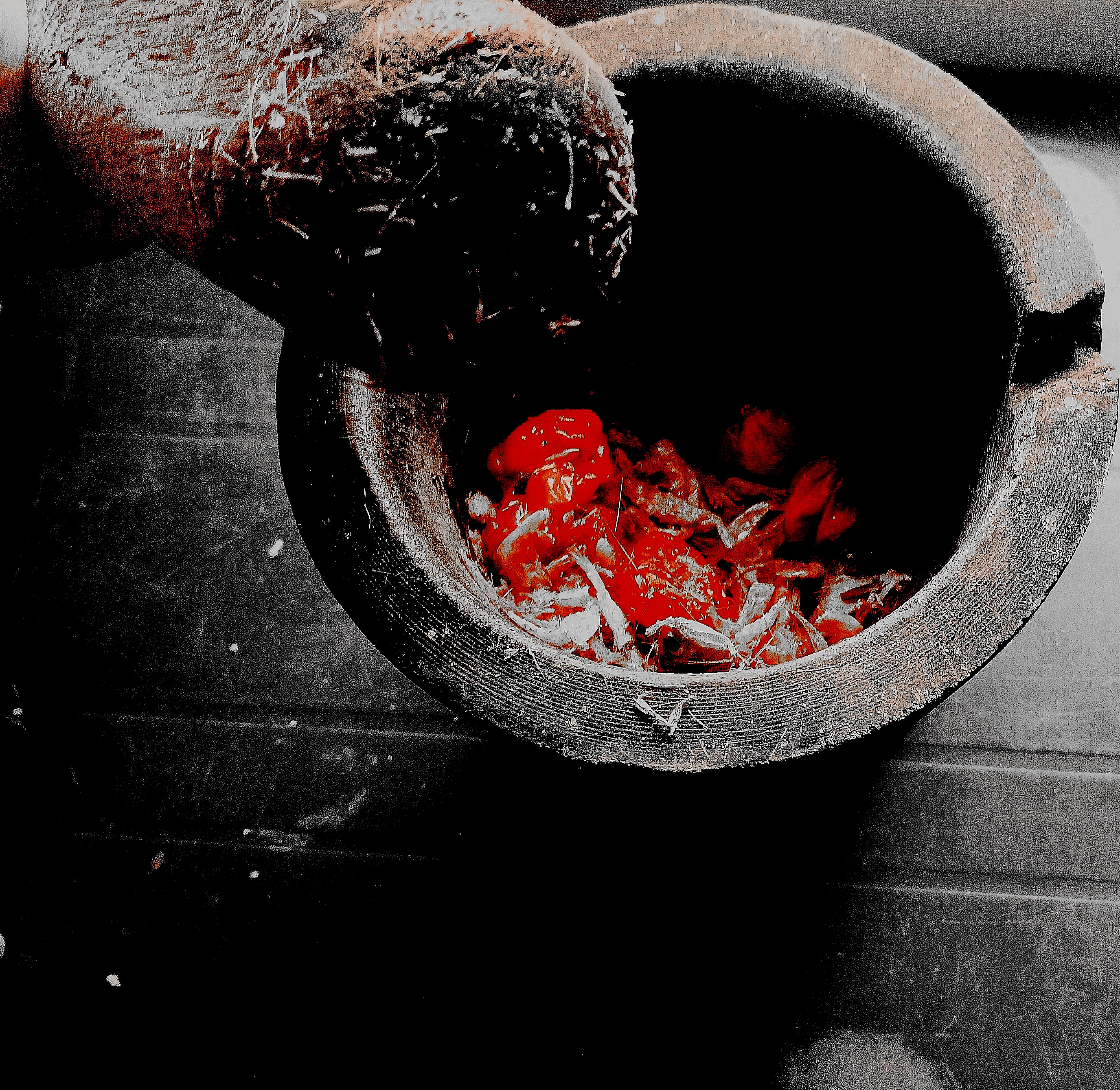|
Ekoi Mythology
The primary traditional Ekoi deities are Obassi Osaw, the sky god, and Obassi Nsi, the earth god, similar to the Efik. Ancestors and natural forces are also emphasized in Ekoi worship. Various Ekoi cults are devoted to the welfare of common activities, such as farming. Before the establishment of British colonial administration, the egbo was a prominent Ekoi secret society that had strong social regulatory functions as well as influence in religious matters. Members of the egbo used a form of ideographic writing called nsibidi, variations of which were formerly found among other ethnic groups in southeastern Nigeria. The Ekoi practice traditional medicine and have treated such diseases as smallpox with local medicinal plants. In addition to displaying an extensive knowledge of and aesthetic appreciation for flowers, the Ekoi create mural paintings on sanctuaries, make pottery Pottery is the process and the products of forming vessels and other objects with clay and other cer ... [...More Info...] [...Related Items...] OR: [Wikipedia] [Google] [Baidu] |
Ekoi People
Ekoi people, also known as Ejagham, are an ethnic group in the extreme south of Nigeria and extending eastward into the southwest region of Cameroon. They speak the Ejagham language. Other Ekoi languages are spoken by related groups, including the Etung, some groups in Ikom (such as Ofutop, Akparabong and Nde), some groups in Ogoja (Ishibori and Bansarra), Ufia and Yakö. The Ekoi have lived closely with the nearby Efik, Annang, Ibibio and Igbo people of southeastern Nigeria. The Ekoi are best known for their Ekpe headdresses and the Nsibidi text. They traditionally use Nsibidi ideograms, and are the group that originally created them. Geography The Ekoi in Nigeria are found in Cross River State. The Ekoid languages are spoken around this area, although English (the national language) is also spoken. The Ekoi in Cameroon are found in the southwestern region of the country. History The Ekoi originated from the Lake Ejagham area. The Ekoi believe that the heirs of the first ... [...More Info...] [...Related Items...] OR: [Wikipedia] [Google] [Baidu] |
Sky God
The sky often has important religious significance. Many religions, both polytheistic and monotheistic, have deities associated with the sky. The daytime sky deities are typically distinct from the nighttime ones. Stith Thompson's ''Motif-Index of Folk-Literature'' reflects this by separating the category of "Sky-god" (A210) from that of "Star-god" (A250). In mythology, nighttime gods are usually known as night deities and gods of stars simply as star gods. Both of these categories are included here since they relate to the sky. Luminary deities are included as well since the sun and moon are located in the sky. Some religions may also have a deity or personification of the day, distinct from the god of the day lit sky, to complement the deity or personification of the night. Daytime gods and nighttime gods are frequently deities of an " upper world" or "celestial world" opposed to the earth and a "netherworld" (gods of the underworld are sometimes called "chthonic" deities). ... [...More Info...] [...Related Items...] OR: [Wikipedia] [Google] [Baidu] |
Efik Mythology
Efik mythology consists of a collection of myths narrated, sung or written down by the Efik people and passed down from generation to generation. Sources of Efik mythology include bardic poetry, art, songs, oral tradition and proverbs.Aye, Old Calabar, p.189 Stories concerning Efik myths include creation myths, supernatural beings, mythical creatures, and warriors. Efik myths were initially told by Efik people and narrated under the moonlight. Myths, legends and historical stories are known in Efik as while moonlight plays in Efik are known as . Sources Historical literature Since the inception of the triangular trade, the Efik people have been in the limelight of historical scholarship. Several works have centred on different aspects of Efik culture and tradition. Although little focus has been made on the subject of Efik mythology, several works have been written on aspects relating to Efik mythology. The earliest Efik dictionary by Rev Hugh Goldie reveals a number of mythical ... [...More Info...] [...Related Items...] OR: [Wikipedia] [Google] [Baidu] |
Farming
Agriculture or farming is the practice of cultivating plants and livestock. Agriculture was the key development in the rise of sedentary human civilization, whereby farming of domesticated species created food surpluses that enabled people to live in cities. The history of agriculture began thousands of years ago. After gathering wild grains beginning at least 105,000 years ago, nascent farmers began to plant them around 11,500 years ago. Sheep, goats, pigs and cattle were domesticated over 10,000 years ago. Plants were independently cultivated in at least 11 regions of the world. Industrial agriculture based on large-scale monoculture in the twentieth century came to dominate agricultural output, though about 2 billion people still depended on subsistence agriculture. The major agricultural products can be broadly grouped into foods, fibers, fuels, and raw materials (such as rubber). Food classes include cereals (grains), vegetables, fruits, cooking oils, meat, milk, e ... [...More Info...] [...Related Items...] OR: [Wikipedia] [Google] [Baidu] |
Ekpe
Ekpe, also known as Mgbe/Egbo (Ekoi language: ''leopard''; derived from the Ibibio term for the same), is a West African secret society in Nigeria and Cameroon flourishing chiefly among the Efiks. It is also found among a number of other ethnic groups, including the Bahumono of the Cross River State, the Ibibio, the Uruan and the Oron of Akwa Ibom State, Arochukwu and some other parts of Abia State, as well as in the diaspora, such as in Cuba and Brazil. The society is still active at the beginning of the 21st century, now playing more of a ceremonial role. There are two distinct but related societies. The primary society is located in the Cross River, Akwa Ibom and Arochukwu areas of Nigeria, and the secondary society consists of members from the Southern and Eastern Igbo groups of the same country. Ekpe ''Ekpe'' is a mysterious spirit who is supposed to live in the jungle and to preside at the ceremonies of the society. Members of the Ekpe society are said to act as ... [...More Info...] [...Related Items...] OR: [Wikipedia] [Google] [Baidu] |
Secret Society
A secret society is a club or an organization whose activities, events, inner functioning, or membership are concealed. The society may or may not attempt to conceal its existence. The term usually excludes covert groups, such as intelligence agencies or guerrilla warfare insurgencies, that hide their activities and memberships but maintain a public presence. Definitions The exact qualifications for labeling a group a secret society are disputed, but definitions generally rely on the degree to which the organization insists on secrecy, and might involve the retention and transmission of secret knowledge, the denial of membership or knowledge of the group, the creation of personal bonds between members of the organization, and the use of secret rites or rituals which solidify members of the group. Anthropologically and historically, secret societies have been deeply interlinked with the concept of the Männerbund, the all-male "warrior-band" or "warrior-society" of pre-modern cu ... [...More Info...] [...Related Items...] OR: [Wikipedia] [Google] [Baidu] |
Ideographic Writing
An ideogram or ideograph (from Greek "idea" and "to write") is a graphic symbol that represents an idea or concept, independent of any particular language, and specific words or phrases. Some ideograms are comprehensible only by familiarity with prior convention; others convey their meaning through pictorial resemblance to a physical object, and thus may also be referred to as ''pictograms''. The numerals and mathematical symbols are ideograms – 1 'one', 2 'two', + 'plus', = 'equals', and so on (compare the section "Mathematics" below). In English, the ampersand & is used for 'and' and (as in many languages) for Latin ' (as in &c for '), % for 'percent' ('per cent'), # for 'number' (or 'pound', among other meanings), § for 'section', $ for 'dollar', € for 'euro', £ for 'pound', ° for 'degree', @ for 'at', and so on. The reason they are ideograms rather than logograms is that they do not denote fixed morphemes: they can be read in many different languages, not just E ... [...More Info...] [...Related Items...] OR: [Wikipedia] [Google] [Baidu] |
Nsibidi
Nsibidi (also known as nsibiri, nchibiddi or nchibiddy) is a system of symbols or proto-writing developed in what is now the far South of Nigeria. They are classified as pictograms, though there have been suggestions that some are logograms or syllabograms. Use of the symbol system was first described in 1904. Excavation of terracotta vessels, headrests, and anthropomorphic figurines from the Calabar region of southeast Nigeria, dated to roughly the 5th to 15th centuries, revealed "an iconography readily comparable" to ''nsibidi''. There are several hundred nsibidi symbols. They were once taught in a school to children. Many of the signs deal with love affairs; those that deal with warfare and the sacred are kept secret. Nsibidi is used on wall designs, calabashes, metals (such as bronze), leaves, swords, and tattoos. It is primarily used by the Ekpe leopard society (also known as Ngbe or Egbo), a secret society that is found across Cross River State among the Ekoi, Efik, I ... [...More Info...] [...Related Items...] OR: [Wikipedia] [Google] [Baidu] |
Nigeria
Nigeria ( ), , ig, Naìjíríyà, yo, Nàìjíríà, pcm, Naijá , ff, Naajeeriya, kcg, Naijeriya officially the Federal Republic of Nigeria, is a country in West Africa. It is situated between the Sahel to the north and the Gulf of Guinea to the south in the Atlantic Ocean. It covers an area of , and with a population of over 225 million, it is the most populous country in Africa, and the world's sixth-most populous country. Nigeria borders Niger in the north, Chad in the northeast, Cameroon in the east, and Benin in the west. Nigeria is a federal republic comprising of 36 states and the Federal Capital Territory, where the capital, Abuja, is located. The largest city in Nigeria is Lagos, one of the largest metropolitan areas in the world and the second-largest in Africa. Nigeria has been home to several indigenous pre-colonial states and kingdoms since the second millennium BC, with the Nok civilization in the 15th century BC, marking the first ... [...More Info...] [...Related Items...] OR: [Wikipedia] [Google] [Baidu] |
African Traditional Medicine
Traditional African medicine is a range of traditional medicine disciplines involving indigenous herbalism and African spirituality, typically including diviners, midwives, and herbalists. Practitioners of traditional African medicine claim to be able to cure a variety of diverse conditions including cancer, psychiatric disorders, high blood pressure, cholera, most venereal diseases, epilepsy, asthma, eczema, fever, anxiety, depression, benign prostatic hyperplasia, urinary tract infections, gout, and healing of wounds and burns and even Ebola. Diagnosis is reached through spiritual means and a treatment is prescribed, usually consisting of a herbal remedy that is considered to have not only healing abilities but also symbolic and spiritual significance. Traditional African medicine, with its belief that illness is not derived from chance occurrences, but through spiritual or social imbalance, differs greatly from modern scientific medicine, which is technically and analytical ... [...More Info...] [...Related Items...] OR: [Wikipedia] [Google] [Baidu] |
Smallpox
Smallpox was an infectious disease caused by variola virus (often called smallpox virus) which belongs to the genus Orthopoxvirus. The last naturally occurring case was diagnosed in October 1977, and the World Health Organization (WHO) certified the global eradication of the disease in 1980, making it the only human disease to be eradicated. The initial symptoms of the disease included fever and vomiting. This was followed by formation of ulcers in the mouth and a skin rash. Over a number of days, the skin rash turned into the characteristic fluid-filled blisters with a dent in the center. The bumps then scabbed over and fell off, leaving scars. The disease was spread between people or via contaminated objects. Prevention was achieved mainly through the smallpox vaccine. Once the disease had developed, certain antiviral medication may have helped. The risk of death was about 30%, with higher rates among babies. Often, those who survived had extensive scarring of their ... [...More Info...] [...Related Items...] OR: [Wikipedia] [Google] [Baidu] |
Mural
A mural is any piece of graphic artwork that is painted or applied directly to a wall, ceiling or other permanent substrate. Mural techniques include fresco, mosaic, graffiti and marouflage. Word mural in art The word ''mural'' is a Spanish adjective that is used to refer to what is attached to a wall. The term ''mural'' later became a noun. In art, the word mural began to be used at the beginning of the 20th century. In 1906, Dr. Atl issued a manifesto calling for the development of a monumental public art movement in Mexico; he named it in Spanish ''pintura mural'' (English: ''wall painting''). In ancient Roman times, a mural crown was given to the fighter who was first to scale the wall of a besieged town. "Mural" comes from the Latin ''muralis'', meaning "wall painting". History Antique art Murals of sorts date to Upper Paleolithic times such as the cave paintings in the Lubang Jeriji Saléh cave in Borneo (40,000-52,000 BP), Chauvet Cave in Ardèche departmen ... [...More Info...] [...Related Items...] OR: [Wikipedia] [Google] [Baidu] |

_produced_by_the_Ironbar_family_of_Old_Calabar.jpg)



_2088.jpg)


